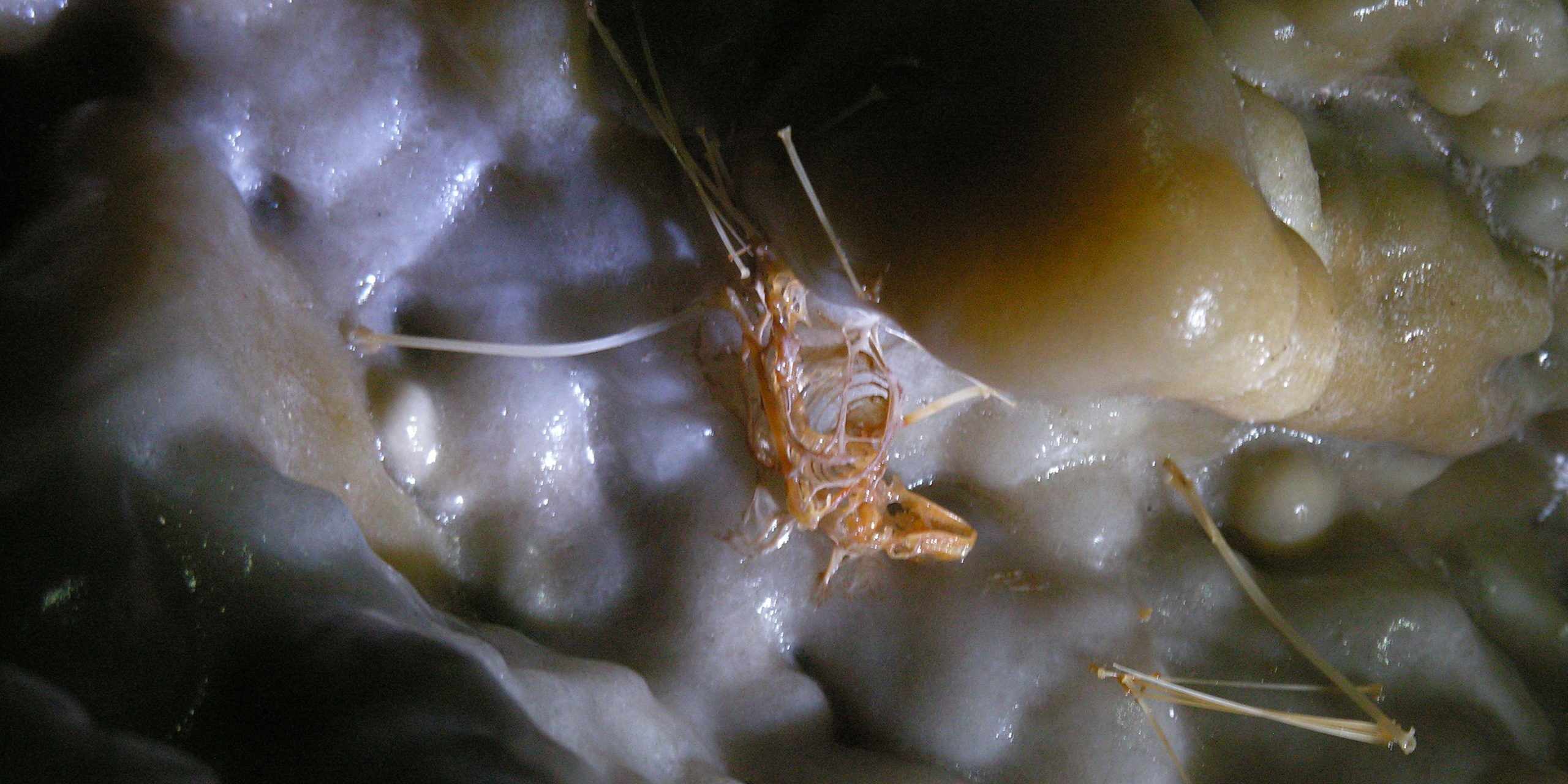Circa due mesi fa abbiamo parlato del pipistrello solitario (ferro di cavallo minore) che per la prima volta a memoria d’uomo aveva scelto la Grotta del Vento per trascorrere il letargo invernale. Ciò aveva destato non poco stupore, poiché il luogo scelto per il letargo era quanto di più inadatto si potesse immaginare sia a causa di fattori ambientali (correnti d’aria, variazioni di temperatura e di umidità), sia di disturbo, dovuti alla frequentazione dei turisti (voci, rumori, accensione e spegnimento dei fari, apertura e chiusura della vicina porta blindata).
Negli ultimi anni era accaduto talvolta che, d’estate, un esemplare isolato della stessa specie frequentasse occasionalmente il primo tratto della grotta durante il giorno, dove riposava appeso a uno sperone della volta in attesa della sera, quando poteva riprendere la sua attività predatoria catturando gli insetti attirati dalla luce dei lampioni esterni. Anche in questo caso stupiva il fatto che l’animale dormisse tranquillo, incurante delle centinaia di visitatori che transitavano sotto di lui.
È comunque assodato che anche in passato i pipistrelli non hanno mai scelto questa grotta come luogo abituale di letargo o di stazionamento diurno. La centinaia di spedizioni effettuate anche nei rami più reconditi della grotta non hanno mai incontrato tracce di una frequentazione dei chirotteri, quali i depositi di guano o le caratteristiche macchie scure del soffitto.
Resta però il fatto che presso l’estremità superiore dei principali rami ascendenti sono state trovati diversi scheletri di pipistrello. Uno di questi, rinvenuto recentemente su una colata della Diramazione del Paradiso, appare parzialmente coperto da un sottile strato di calcite che ne ha saldato alcuni elementi alla concrezione sottostante.
Si ritiene che prima che venisse realizzata la porta blindata situata subito dopo la Sala dell’Orso, la Grotta del Vento, a causa della sua particolare conformazione, si sia rivelata più volte una trappola mortale per i pipistrelli. In caso di maltempo, se subito dopo l’alba le nubi si squarciavano all’improvviso, i chirotteri cercavano frettolosamente riparo nella grotta per sfuggire alla luce solare. Quando alla sera volevano uscire, istintivamente volavano verso l’alto, forse guidati dalle correnti d’aria, restando poi intrappolati nelle diramazioni ascendenti che, oltre un certi limite, divenivano troppo strette per consentire il passaggio ad ali spiegate.
La foto dello scheletro è stata scattata dal geologo Noah Hobbs.
English Blog
About two months ago we talked about the solitary bat (lesser horseshoe) which for the first time as far as man can remember chose the Grotta del Vento to hibernate in Winter. This caused a lot of surprise since the place chosen for hibernation was the least suitable one could imagine due to environmental factors (air currents, temperature variations and humidity), and also due to the disturbance caused by tourists (voices, noise, switching lights off and on and the opening and closing of the armoured door).
During the last years it had sometimes happened in Summer, that an isolated specimen of the same species occasionally came into the first part of the cave during the day, where it rested hanging from a rock spur on the ceiling waiting for evening, when it could become a predator again capturing insects attracted by the streetlights outside. Also in this case it was surprising that the animal slept so peacefully, unaware of the hundreds of visitors passing through below him.
It has been considered that also in the past bats had never chosen this cave as a usual place for hibernation or to stay during the day. The hundred expeditions made in the most remote branches of the cave have never met any traces showing bats had been there, such as deposits of guano or the characteristic dark marks on the ceiling.
The fact remains however that in the top part of the main ascending branches several bat skeletons have been found. One of these, recently found on a flowstone of the Tunnel of Paradise, appears partly covered by a thin layer of calcite which has stuck some elements to the formation below.
It is believed that before the armoured door situated immediately after the Hall of the Bear was made, the Grotta del Vento, due to its particular shape, more than once has proven to be a mortal trap for bats. In the case of bad weather, if right after dawn the clouds opened suddenly, the bats would look for shelter in the cave to escape from sunlight. When at night they wanted to go out, instinctively they would fly upwards, maybe guided by the air currents, then remained trapped in the ascending branches which, past a certain limit, became too narrow to permit passage with their wings spread.
The photo of the skeleton was taken by the geologist Noah Hobbs.








